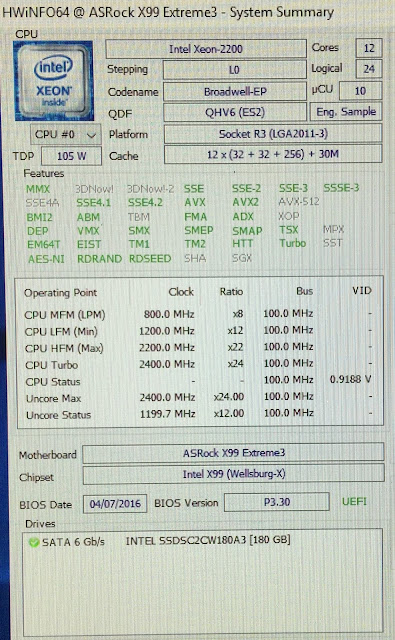Single and Dual Xeon workstations builds from components 2017
Introduction
While writing the blog on my latest dual Xeon workstation, I discovered I hadn't written a post on earlier single and dual Xeon builds. So, a quick post on them using photos from earlier.The first was a single Xeon workstation for my son while he was studying mechanical engineering and doing airflow simulation using Solidworks. I used an "engineering sample" (ES) Xeon to cut costs. The details are in the photos. E5-2650 v4 (30M Cache, 2.20 GHz)
Having done the single Xeon, I tried a dual Xeon machine. At first, I used ES V4 Xeons, but from different eBay suppliers. I subsequently discovered they weren't exactly the same and would not work. In hindsight, two ES Xeons (same stepping and printing on the case) from the same supplier might work. ES processors only work with some motherboards. I then used two older generation Xeons, V3, with success. E5 2683 V3 2.0 GHz The Micro Systems dual motherboard is not very friendly for running Windows 10, but I eventually got it all going. It was an expensive build and I sold it at cost to a local engineering PhD student for $4k. However, it was blazing fast! Details are in the photos.
The single Xeon machine scored 1467 with 24 threads on Cinebench, while the dual Xeon with 56 threads scored 3243. The results are pretty much proportional to the number of threads and the CPU clock speed. A problem with all Xeon machines is that many applications only use one core and the lower speed of a Xeon compared to an ordinary retail CPU like an i7 is a disadvantage.










Comments
Post a Comment